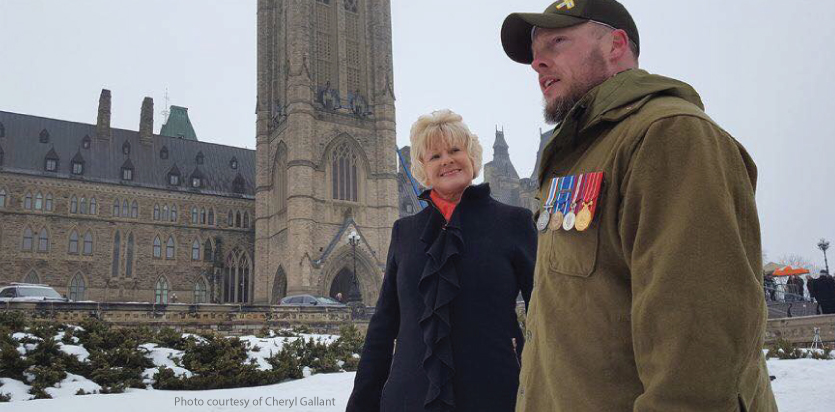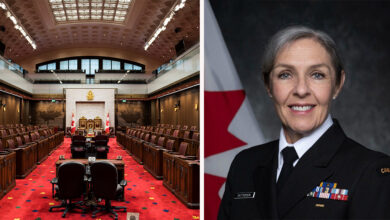Beyond The Uniform
Veterans continue to fight against New Veterans Charter
Tired of the government failing on promises and the “broken system,” a group of veterans and supporters took Parliament Hill by storm last week to protest unfair treatment by the Liberal government.
Thursday’s protest stems from an encounter Prime Minister Justin Trudeau had with a veteran in a town hall earlier this month. During the town hall, Cpl. (ret’d) Brock Blaszczyk confronted Trudeau about the so-called Equitas case.
The Equitas Case, which dates back to 2012, is being fought by a group of veterans on behalf of the entire veteran community to bring back the Pension Act and to eliminate the New Veterans Charter.
The New Veterans Charter (NVC) came into effect in April 2006 as a way to care for the new-age of Veterans, primarily those returning from Afghanistan. Believing that these Veterans had different needs than those who had served in prior wars, the NVC was established by Veterans Affairs Canada and includes an earning loss benefit, a financial award and other allowances for those who have service-related disabilities. The biggest difference between the Pension Act and the NVC is the one-time lump-sum disability award Veterans under the NVC receive. Those under the Pension Act received monthly tax-free pension for life and a survivor benefit.
The Equitas Veterans argue that the NVC is not equitable to the payments Veterans received prior to 2006. They also critique the idea of a lump-sum payout because the financial support is given to those with serious mental health concerns and those who joined the military at very young ages before their injury. In many cases, the lump sum amount is then spent very quickly instead of lasting a lifetime, argue the Equitas Veterans.
Additionally, under the NVC many Veterans have to file for a number of different programs to receive the compensation they deserve.
In December, the Liberal government announced its revamped “pension-for-life” program. The plan includes Pain and Suffering Compensation, Additional Pain and Suffering Compensation and Income Replacement Benefit. Under the new plan, Veterans will have a choice if they would prefer to receive a one-time lump sum or monthly tax-free financial compensation with monthly payments for life. The maximum amount would be $2,650 for those most severely injured. The program will go in effect in 2019.
Many Veterans, however, were not pleased with the long-awaited changes, believing it did not live up to the government’s promises.
During the town hall on Feb. 1, Blaszyczk questioned Trudeau on why his government was still fighting this case when he had promised during his campaign not to fight veterans in court.
In response, Trudeau said: “Why are we still fighting against certain veterans groups in courts because they’re asking for more than we are able to give them right now.”
These comments have struck a chord with many veterans, and hence the decision to protest in the country’s capital this week was made by former Canadian Armed Forces (CAF) member Colin Saunders.
Not only has Ottawa witnessed protests from veterans last week, but inside Parliament Hill Conservative and NDP members alike have attacked the liberal government for their failings, especially in light of the Equitas case.
Additionally last week, Veterans Ombudsman Gary Walbourn was called in to testify before Parliamentarians about the need to conduct a study on how to help CAF members transition to civilian life.
According to CBC, a rather frustrated Walbourn answered by saying:
“We do not need another study into transition.
“We know what needs to be done. We just need to do it.”
Above image: Colin Saunders at the protest on Parliament Hill with Renfrew-Nippising-Pembroke Member of Parliament Cheryl Gallant










